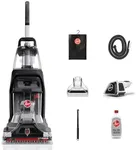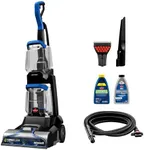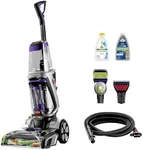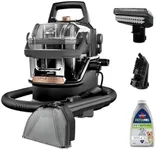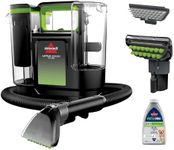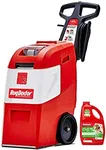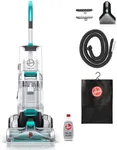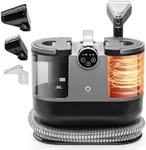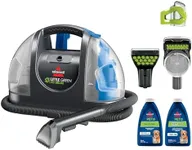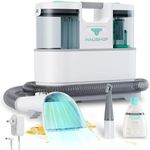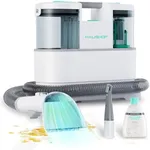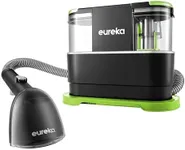Buying Guide for the Best Carpet Extractors
Choosing the right carpet extractor can make a significant difference in maintaining the cleanliness and longevity of your carpets. Carpet extractors are essential tools for deep cleaning, as they remove dirt, stains, and allergens that regular vacuuming cannot. When selecting a carpet extractor, it's important to consider various specifications to ensure you get the best fit for your needs. Here are the key specs to look at and how to navigate them.Water Tank CapacityThe water tank capacity determines how much water the extractor can hold at one time. This is important because a larger tank means fewer refills during cleaning, which can save time and effort. Tank capacities can range from small (1-2 gallons) for light, occasional use, to large (10+ gallons) for heavy-duty, frequent cleaning. If you have a large area to clean or plan to use the extractor frequently, a larger tank capacity would be more convenient. For smaller spaces or infrequent use, a smaller tank may suffice.
Power and SuctionThe power and suction of a carpet extractor are crucial for effective cleaning. Higher power and stronger suction mean better extraction of dirt and water from the carpet, leading to faster drying times and more thorough cleaning. Power is usually measured in amps or watts, and suction is often indicated by water lift or airflow (CFM). For heavy-duty cleaning or commercial use, look for higher power and suction ratings. For home use, moderate power and suction should be adequate.
Heating CapabilitySome carpet extractors come with built-in heaters that heat the water, which can enhance cleaning performance by breaking down dirt and stains more effectively. Heated extractors are particularly useful for tough stains and high-traffic areas. If you frequently deal with stubborn stains or want the best cleaning results, consider a model with heating capability. For general cleaning, a non-heated model may be sufficient.
Hose and Cord LengthThe length of the hose and power cord affects the maneuverability and reach of the carpet extractor. Longer hoses and cords allow you to clean larger areas without needing to move the machine frequently or switch power outlets. This is especially useful for cleaning large rooms or multiple rooms. If you have a large space to clean, look for models with longer hoses and cords. For smaller areas, standard lengths should be adequate.
Weight and PortabilityThe weight and portability of a carpet extractor are important for ease of use and storage. Lighter models are easier to maneuver and carry, especially if you need to transport the machine up and down stairs. However, lighter models may have smaller tanks and less power. If you need a machine that is easy to move around, look for a lightweight and portable model. For heavy-duty cleaning, you might need to compromise on weight for better performance.
Attachments and AccessoriesAttachments and accessories can enhance the versatility of a carpet extractor. Common attachments include upholstery tools, crevice tools, and stair tools, which allow you to clean different surfaces and hard-to-reach areas. If you plan to use the extractor for more than just carpets, such as cleaning upholstery or car interiors, look for models that come with a variety of attachments. For basic carpet cleaning, fewer attachments may be needed.
Noise LevelThe noise level of a carpet extractor can be a consideration, especially if you are sensitive to loud sounds or will be using the machine in a residential area. Noise levels are usually measured in decibels (dB). Quieter models are more comfortable to use and less disruptive. If noise is a concern, look for models that are specifically designed to operate quietly. For commercial or infrequent use, noise level may be less of a priority.
